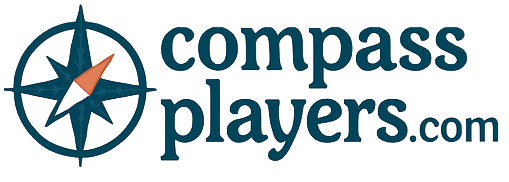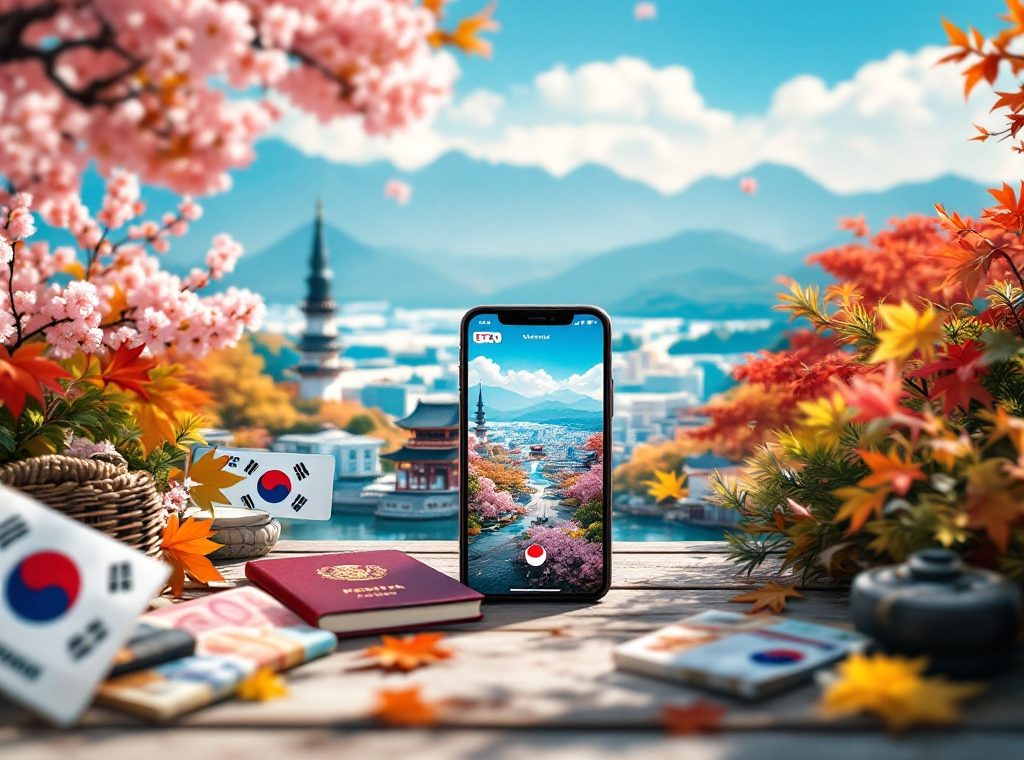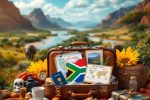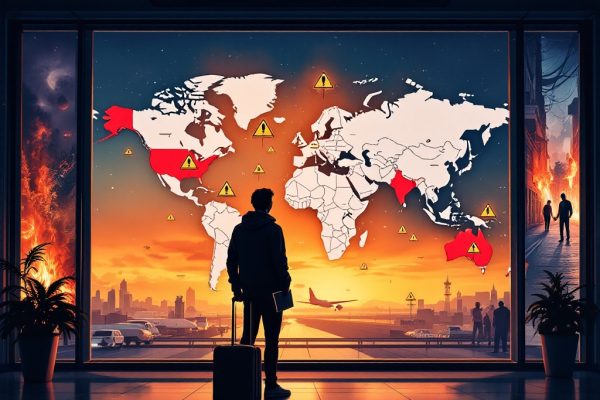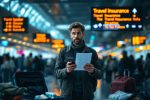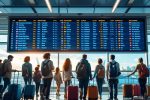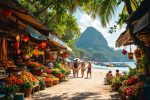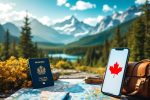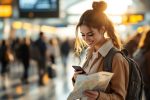South Korea Trip: Preparation for the Travel
Dreaming of exploring South Korea? From breathtaking cherry blossoms in spring to vibrant autumn foliage, South Korea offers an unforgettable experience. This comprehensive guide covers everything you need for a smooth trip, from visa requirements (including the K-ETA) and passport validity to budgeting tips using the Korean Won (KRW) and navigating public transport with the T-money card. Discover essential apps like Papago and Kakao Maps, learn important cultural etiquette, and prioritize safety with emergency numbers and travel insurance advice. Start planning your adventure today!
Important information
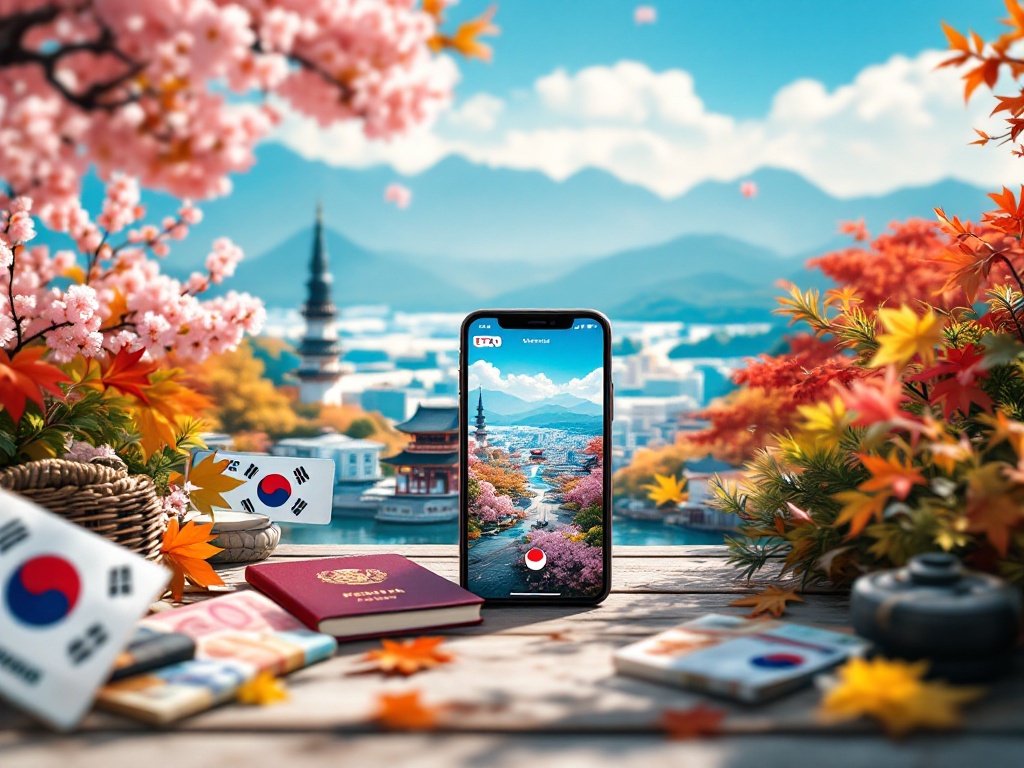
- Visa-free travel up to 90 days is possible for many nationalities, but some require a K-ETA before arrival. Confirm the specific visa rules for your country.
- Spring (April-June) and autumn (September-November) are ideal times to visit due to pleasant weather.
- The local currency is the Korean Won (KRW). Credit cards are widely used, but it’s helpful to carry KRW cash, especially for small businesses and public transport. A T-money card offers discounts on public transport.
- Pack a power adapter (Type C and F) and a portable charger. Useful apps include Papago (translation), Kakao Maps, and Naver Map (navigation).
- For emergencies, call 112 (police, fire, ambulance). Travel insurance is highly recommended.
Visa and Entry Requirements for South Korea
Planning a trip to South Korea? Start by checking the visa requirements, which vary depending on your nationality. Many nationalities can enter visa-free for up to 90 days, while others require a visa in advance. A valid passport is essential for all travelers. Be sure to confirm the specific rules for your citizenship to ensure a smooth trip.
Visa-Free Travel and K-ETA
Many nationalities can travel to South Korea without a visa for tourism or business. However, these stays have time limits, which vary depending on citizenship. Some visa-exempt travelers must obtain a Korea Electronic Travel Authorization (K-ETA) before arrival. This electronic permit is linked to the traveler’s passport and acts as pre-authorization for eligible nationalities.
Korea Electronic Travel Authorization (K-ETA)
South Korea’s new K-ETA (Korea Electronic Travel Authorization) makes travel significantly simpler for many visitors. Before you book your trip, confirm your eligibility for this visa waiver program to ensure a smooth entry process.
Passport Validity
To enter South Korea, you need a valid passport. This is crucial for a hassle-free immigration process.
Best Time to Visit South Korea
South Korea is stunning in spring (April-June) and autumn (September-November).
Enjoy pleasant weather and breathtaking cherry blossoms in spring.
Experience crisp air and vibrant foliage during the autumn months.
Summers are hot and humid, while winters are cold and snowy.
Seasonal Highlights
Spring welcomes the delicate beauty of cherry blossoms and the gentle embrace of mild weather, making it an ideal time to explore parks and gardens.
Summer beckons beachgoers with its warm embrace, perfect for swimming, sunbathing, and various water sports.
As the days shorten, autumn transforms the landscape into a breathtaking tapestry of vibrant foliage.
Winter blankets the mountains in snow, inviting skiers and snowboarders to carve their own paths through the pristine slopes.
Weather Considerations
South Korea experiences four distinct seasons. Summers are hot and humid, with temperatures sometimes reaching as high as 35°C (95°F). Winters, by contrast, are cold and dry, with temperatures dropping as low as -10°C (14°F) in some areas. Spring and autumn offer milder, more pleasant temperatures, making them popular times for tourists. The monsoon season typically occurs between June and September.
Budgeting for Your South Korea Trip
Paying in South Korea is easy. The local currency is the Korean Won (KRW). Credit cards, such as Visa, Mastercard, and American Express, are widely accepted. Discover Card might not be accepted everywhere. It’s recommended to have some Korean Won cash, especially for smaller shops, street food, and public transport. ATMs are readily available and usually offer English instructions, making it easy to withdraw KRW using your foreign debit or credit card.
Accommodation
South Korea offers various accommodation options, from budget hostels to luxury hotels.
Food
Meals range from affordable street food to high-end restaurants. Explore local markets and street food stalls to save money.
Transportation
Public transport, including subways and buses, is an efficient and affordable way to travel. A T-money card can offer discounts.
Budgeting
Set a daily budget and track your expenses. Look for free activities, like visiting parks, temples, museums, walking tours, and cultural events.
Currency and Payment Methods
In South Korea, the currency is the South Korean won (KRW). Credit cards, especially Visa and Mastercard, are widely accepted. Debit cards and mobile payment systems like KakaoPay and Naver Pay are also commonly used. While plastic and digital payments are prevalent, carrying cash is advisable. It’s particularly useful for transactions with smaller vendors, at local markets, and on some forms of public transportation.
Cost of Living and Travel Budget Tips
South Korea offers a range of accommodation options, from luxurious hotels to budget-friendly hostels and guesthouses, catering to diverse budgets. Food costs are equally flexible, allowing you to enjoy affordable street food or indulge in fine dining experiences. To plan your daily budget effectively, consider expenses for meals, transportation, and attractions. For convenient and cost-effective travel, utilize the T-money card for public transportation. Enhance your trip with free activities such as exploring parks and temples, which offer enriching cultural experiences.
Packing Essentials for South Korea
Packing for your South Korea trip requires careful consideration of the country’s distinct seasons. For summer’s hot and humid weather, pack light clothing such as t-shirts, shorts, and dresses. Winter, on the other hand, brings cold temperatures, necessitating warm sweaters, coats, scarves, and gloves. For the milder spring and autumn seasons, layering is key to adapting to fluctuating conditions.
Electronics
A power adapter is essential for your electronic devices, as South Korea uses Type C and F plugs. A portable battery pack will also be invaluable for keeping your devices charged throughout the day.
Health Essentials
Don’t forget essential health items. Pack hand sanitizer, masks (while less common now, they are still worn in some crowded areas), and a basic first-aid kit. Include pain relievers, bandages, and antiseptic wipes for minor ailments.
Clothing for Different Seasons
Spring (March-May)
Enjoy pleasant temperatures ranging from 50°F to 70°F (10°C to 20°C). Pack light layers like sweaters, cardigans, and light jackets.
Summer (June-August)
Experience hot and humid weather, with temperatures often exceeding 85°F (30°C). Breathable clothing such as t-shirts, shorts, and dresses are recommended.
Autumn (September-November)
Enjoy cooler weather, similar to spring, with temperatures between 40°F and 70°F (4°C to 20°C). Light jackets and sweaters are suitable choices.
Winter (December-February)
Be prepared for cold weather, with temperatures potentially falling below freezing. Warm clothing, including coats, scarves, gloves, and hats, is essential, especially in northern regions.
Basic Necessities: Power Plug Adapter, Portable Battery Pack
For your South Korean adventure, pack a Type C and F power plug adapter. This is essential for keeping your electronics charged. A portable battery pack is also recommended for on-the-go power while you sightsee.
Health Essentials: Hand Sanitizer, Masks, First Aid Kit
When packing for your trip, remember the essentials: hand sanitizer, masks, and a basic first aid kit stocked with necessary medical supplies.
Accommodation Options in South Korea
South Korea offers a range of accommodations, from luxurious to budget-friendly. High-end hotels and resorts in cities like Seoul and Busan offer spas, gourmet restaurants, and personalized concierge services. Budget travelers can choose from various hostels and guesthouses that provide basic amenities and opportunities to meet other travelers. For a unique cultural experience, consider staying in a Hanok guesthouse. These renovated traditional homes offer a glimpse into Korea’s architectural heritage and warm hospitality.
Luxury Hotels and Resorts
Looking for a hotel with stunning city views? Signiel Seoul offers breathtaking panoramas. If you prefer a tranquil escape, The Shilla Seoul boasts beautiful traditional Korean gardens. For a resort experience near Incheon International Airport, consider Paradise City.
Budget-Friendly Hostels and Guesthouses
Traveling on a budget? Hostels and guesthouses provide comfortable lodging and opportunities to connect with fellow adventurers. These economical choices often feature shared kitchens and communal spaces, fostering a sense of community. For example, Seoul boasts the Kimchee Sinchon Guesthouse and Hongdae Pencil Guesthouse. Similar options abound in numerous other cities, offering budget-conscious travelers a perfect blend of comfort and camaraderie.
Unique Stays: Hanok Guesthouses
Experience the charm of Korean culture by staying in a traditional hanok guesthouse. These distinctive accommodations showcase exquisite wooden beams and tiled roofs, often surrounding serene courtyards. Many hanoks offer modern conveniences like Wi-Fi and private bathrooms while preserving their historic character. Booking your hanok stay is easy through online platforms or travel agencies.
Transportation in South Korea
Getting around South Korea is easy thanks to its superb public transportation system. Subways and buses are readily available, especially in major cities like Seoul and Busan. These cities have user-friendly subway networks, often featuring English signage for easy navigation. Buses extend this reach, offering comprehensive coverage beyond the subway lines. For a seamless travel experience, consider using a T-money card.Taxis provide a convenient alternative, particularly for short trips or late-night travel. Ride-sharing services are also available in South Korea, offering another option besides traditional taxis.The rechargeable T-money card is a must-have for any traveler. It simplifies payments on subways, buses, and even some taxis. Using a T-money card saves you both time and money. You don’t need to buy individual tickets, and it often provides discounts. These cards are readily available for purchase and top-up at convenience stores and subway stations.
Public Transit: Subway and Buses
South Korea provides excellent public transportation choices, including subways, buses, and trains. Major cities such as Seoul and Busan have remarkably efficient, safe, clean, and easy-to-use subway systems. For traveling between cities, the KTX high-speed train offers a fast and comfortable option. A rechargeable T-money card allows convenient access to most public transportation, making travel significantly easier.
Taxis and Ride-Sharing Services
Taxis are readily available, but ride-sharing apps like Kakao T offer a convenient alternative with a wider range of vehicles, including black vans and taxis, to enhance your travel options. Kakao T provides more choices, from standard taxis to larger black vans, giving you greater flexibility for your transportation needs.
T-Money Card: A Traveler’s Must-Have
The T-money card simplifies public transport in South Korea. This rechargeable card works on subways and buses, eliminating the need for individual tickets. It can also be used on some taxis and in select stores. Using the T-money card offers several benefits: lower fares compared to single-journey tickets, free transfers between different modes of transport (e.g., subway to bus) within a certain timeframe, and the convenience of not having to purchase tickets every time you travel. You can purchase a T-money card at convenience stores and subway stations. Various designs and limited editions are available. The card itself costs around 2,500 to 4,000 KRW, and you can load it with your desired amount. Unused balances can be refunded, though certain conditions may apply.
Communication and Navigation
Stay connected throughout your trip to South Korea with readily available public Wi-Fi hotspots and easy access to SIM cards with data plans at Incheon (ICN) and Gimpo (GMP) airports.Enhance your travel experience by downloading these essential apps:
- Papago: for seamless language translation.
- Kakao Maps: offering excellent navigation and public transit directions.
- Naver Map: another reliable option for navigation and public transit guidance.
SIM Card and Wifi Availability
Staying connected in South Korea is easy. Public Wi-Fi hotspots are widely available, including cafes, restaurants, parks, and other public spaces, many of which are free. Alternatively, purchase a local prepaid SIM card upon arrival at Incheon (ICN) or Gimpo (GMP) airports with various data plans to suit your needs.
Essential Apps: Papago, Kakao Maps, Naver Maps
For Korean translations, Papago is an invaluable resource.
When it comes to navigating South Korea, Kakao Maps and Naver Maps are indispensable. They offer not only navigation but also real-time transit updates and details on points of interest, simplifying travel throughout the country.
Cultural Experiences and Etiquette
In South Korea, greet others respectfully with a bow.
When exchanging items, use both hands to show politeness.
Remove your shoes before entering homes and some restaurants, as this is a key custom.
Meals commence when the eldest person begins eating, a sign of respect for elders.
Avoid loud conversations in public places like subways and buses.
Gesture with your whole hand instead of pointing with your finger, as it’s considered more polite.
Tipping is not customary in South Korea.
Cultural Etiquette: Do’s and Don’ts
Bowing is a respectful way to greet someone. Remove your shoes before entering homes and certain restaurants. When giving or receiving something, use both hands to show care. At mealtimes, wait for the eldest person to begin eating before you do. Refilling others’ glasses before your own is a thoughtful gesture.
Avoid loud conversations in public, as it can be disruptive. Blowing your nose at the table is considered impolite. Instead of pointing with a single finger, gesture with your whole hand; it’s more respectful. Refrain from writing names in red ink due to its negative associations. Tipping is not expected.
Safety and Security in South Korea
Stay vigilant against petty theft, especially in crowded areas, by keeping a close eye on your belongings. Showing respect for local customs and laws will enhance your trip.In case of a police emergency, dial 112. For ambulance or fire services, dial 119. Remember to save these numbers in your phone. South Korea’s country code is +82.For peace of mind, consider purchasing travel insurance. A comprehensive plan will cover unexpected medical expenses, trip cancellations, and lost luggage. Choose the coverage that best suits your needs.
General Safety Tips
Be aware of your surroundings and protect your belongings.
Refrain from walking alone late at night, particularly in unfamiliar areas.
Keep emergency contacts easily accessible.
Learn about local laws and customs, and always show respect to locals.
If you feel threatened, trust your instincts and leave the situation.
Emergency Contact Numbers
In case of emergencies in South Korea, dial 112 to reach police, fire, and ambulance services.
Travel Insurance Recommendations
Secure your South Korea trip with travel insurance. It protects you from unexpected problems like medical emergencies, trip cancellations, and lost baggage. Make sure your policy covers your planned activities and destinations. Carefully review the policy details to understand the coverage and avoid surprises.
Additional Travel Tips for First-Time Travelers
Planning a trip to Korea? Enhance your experience by learning some basic Korean phrases. Download translation apps like Papago for real-time assistance. Researching Korean customs and etiquette shows respect and deepens cultural immersion. Pack a universal power adapter and a portable battery pack to stay connected. Notify your bank of your travel dates to avoid any card issues. Photocopy your passport and important documents, keeping copies separate from the originals. Carry local emergency numbers and your embassy’s contact information. Most importantly, secure travel insurance before your departure.
Learn basic Korean phrases. This will enrich your travel experience.
Download translation apps like Papago. These will provide invaluable assistance during your trip.
Research Korean customs and etiquette. Demonstrating cultural sensitivity will enhance your interactions with locals.
Pack a universal power adapter and portable battery pack. These will ensure you can stay connected throughout your trip.
Notify your bank of your travel dates. This will prevent any issues with your cards while abroad.
Photocopy your passport and important documents. Store these copies separately from the originals for security.
Carry local emergency numbers and your embassy’s contact information. Having these readily available can be crucial in unforeseen situations.
Secure travel insurance before you depart. This is the most important step to protect yourself against unexpected events.
Language Barrier: Learning Basic Korean
Learning some basic Korean can greatly enhance your travel experience. The Korean alphabet, Hangul, is surprisingly easy to learn. Using simple greetings such as “hello” (annyeonghaseyo) and “thank you” (gamsahamnida) can make a positive impression. Translation apps like Papago can be very useful. Additionally, English is widely spoken, particularly in urban areas.
